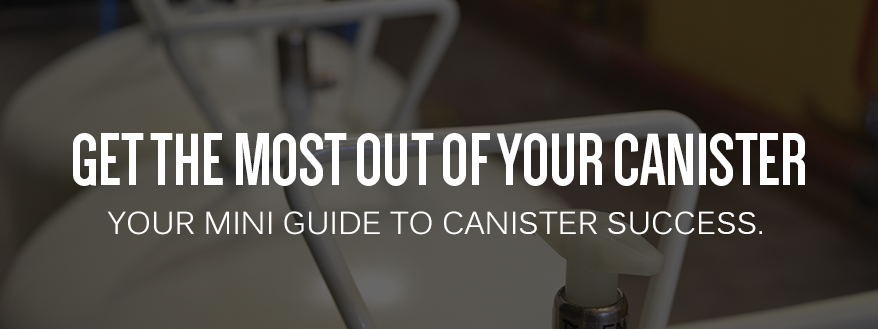
It's happened plenty of times. More times than we'd like to admit, unfortunately! We've set up a new user with TensorGrip canister adhesives only to find out a few weeks later that they're no longer using it due to...um, poor spray patterns, being unsure of some detail and many more excuses. Things that quite frankly could have been avoided if the we, the brand representatives, had taken the time to explain. So here's a mini guide on how to make sure you get the best user experience out of your canister of TensorGrip.
Getting Set Up
After that exciting moment of opening the box of your new canister and diving into your brand new ToolKit (if you're a first-time buyer), you might start to feel overwhelmed at getting this new unit set up. We understand. :) That's why we created the Spraying Manual. This is a great tool to help you get started the right way. On page 5, you'll find a section called "Preparation". This will help you connect up the gun, hose and canister.
The last step (published on the inside of every gun and ToolKit box) is to make sure you install the tip correctly, and get it aligned perfectly straight vertically. Once the tip is on the gun and the retainer has been tightened, your canister is ready for production!
Hint: if you skip putting a tip on, you'll get a wonderful, hose-like effect -- similar to a fire hose. Not recommended!
Know Your Spray Patterns
Each product has been grouped into one of the four following spray patterns, with Web Spray being the most common. No matter which one you'll be using, it's critical to understand the nature of the product and it's unique requirements for spraying. Read more in the spray manual on page 4.
- Web Spray
- Mist Spray
- Pebble Spray
- Snowflake Spray
Be sure to coat both substrates being bonded for the strongest bond. If you're gluing up difficult substrates, you may want to consider a windowpane pattern - an additional spray around the entire edge of the substrate, like an outline.
Give It a Rest!
One of the most important parts in ensuring a quality bond is to make sure the adhesive is properly dried. The length of time it takes to dry will vary depending on the type of glue, the temperature and the humidity. Typically, most adhesives will be dry within 30 seconds to 3 minutes, but that time will increase with the humidity. Be sure to check the Technical Data Sheet for exact times for each product.
Put The Pressure On
As soon as your adhesive is fully dried, position the two substrates, or surfaces, and press together. Remember, the more pressure you apply, the stronger the bond will be. Where possible, use a roller to get an outperforming bond.
Where All Can I Use This Glue?
Every TensorGrip adhesive comes with a series of icons on its label. These icons signify the recommended substrates for each adhesive. A list of these icons and what each one means can be found here. Outside of these recommended uses, we'd suggest checking with an adhesive expert (you can get hold of one here) to see whether it's a good idea to try any other substrates. We know it's tempting to want to use a glue far and wide when you find one that works!
More Questions?
That's what we're here for! Get in touch with us today to answer all your adhesive questions.